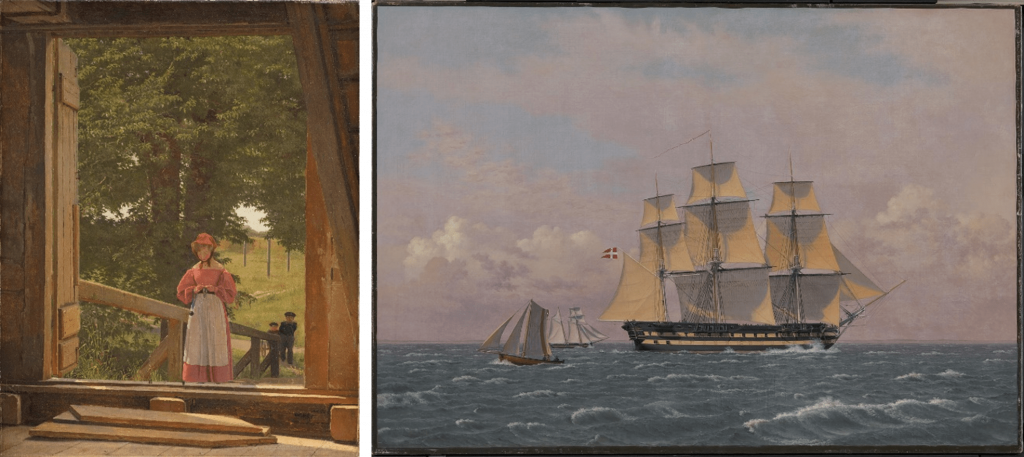Proteins from cereal grains and yeast were found in the ground layer of paintings produced in Denmark in the early 19th century by two of the best known artists from the Golden Age of Danish Painting: Christoffer Wilhelm Eckersberg and Christen Schiellerup Købke. These proteins probably indicate the use of a beer brewing (by-)product for the preparation of the canvases in the workshops of the Royal Danish Academy of Fine Arts.
Dr. Fabiana Di Gianvincenzo, now post-doctoral researcher at the Heritage Science Laboratory Ljubljana, worked on this topic during her PhD research at the Globe Institute of the University of Copenhagen (Denmark), in collaboration with the National Gallery of Denmark and the Royal Danish Academy (both in Copenhagen). The results have recently been published in Science Advances, in an open-access publication. Canvas paintings are very often made of many layers, including a ground layer, applied to the canvas to prepare it before the paint. Proteinaceous materials have been historically used in this layer, but the use of a brewing (by-)product is thus far undocumented for this purpose.

Ten paintings in total were part of this study, but only in seven of them the researchers found cereal and yeast proteins: the ones produced while the two artists were working at the Academy of Fine Arts. Eckersberg was a professor, and Købke a student, between 1826 and 1833. Since the Academy of Fine Arts is known to have provided painting materials to students and professors, the paintings produced in this period were probably made using canvases prepared at these workshops, which can therefore be connected to the use of the brewing (by-)product.
The mechanical properties of beer and residual yeast, one of the main by-products of brewing, were tested by preparing canvas reproductions in the laboratory. The results confirmed that these materials can be used to produce elastic, resistant and stable ground layers.

The technique used to produce these results is mass spectrometry-based proteomics, which allows for the characterisation of the whole protein composition of a sample. The untargeted approach used in this study was key to the identification of an unconventional material for the preparation of canvases. Despite beer is mentioned for art production in Danish literature, no source reports the use of brewing by-products as binders in ground layers, and this study represents the first molecular evidence of this use. Studies like this make it increasingly clear that large gaps still exist in our knowledge of the techniques and the materials used in local fine art production. They also reveal hidden connections between artworks and the society, the economy and the culture that produced them. For this reason, the applications of proteomics to cultural heritage will likely become more and more common, in the future.
Read the open-access publication here: http://www.science.org/doi/10.1126/sciadv.ade7686
Media Coverage
Among the several media outlets that covered the topic, we report below the links to articles in the Smithsonian Magazine, Science, AP news, and the Washington post. Besides Dr. Di Gianvincenzo, Prof. Cecil Krarup Andersen from the Royal Danish Academy (Copenhagen, Denmark) and Prof. Enrico Cappellini from the Globe Institute, University of Copenhagen (Copenhagen, Denmark) also held interviews. Further news were published in Videnskab.dk, and in Italian in several outlets, including Leggo.
In addition to the articles, Dr. Fabiana Di Gianvincenzo was interviewed for an episode of the Science Magazine podcast, where she talked about whether it was expected to find brewing products in paintings, what was the role of beer in the Danish society in the 19th century, and what might have been the role of this brewing (by-)product in the ground layer of these paintings.
- Smithsonian: Danish golden age painters used beer leftovers to prep thir canvases
- Science: Beer was the backdrop to Danish golden age masterpieces
- AP news: Danish masters prepped canvases with leftovers from brewing beer
- The Washington Post: Danish masters prepped canvases with leftovers from brewing beer
- PODCAST: Science: Talk tongues, detecting beer, and shifting perspectives on females
